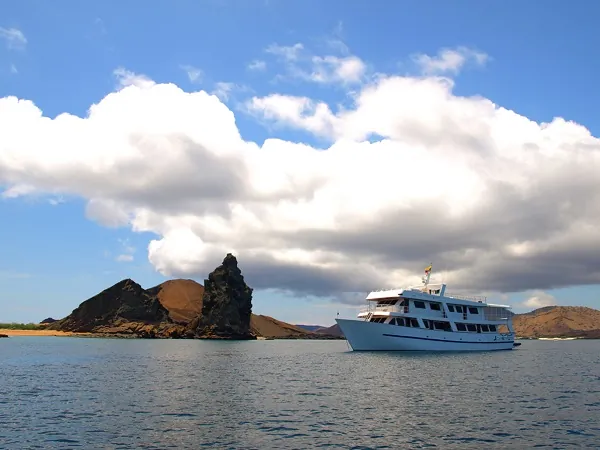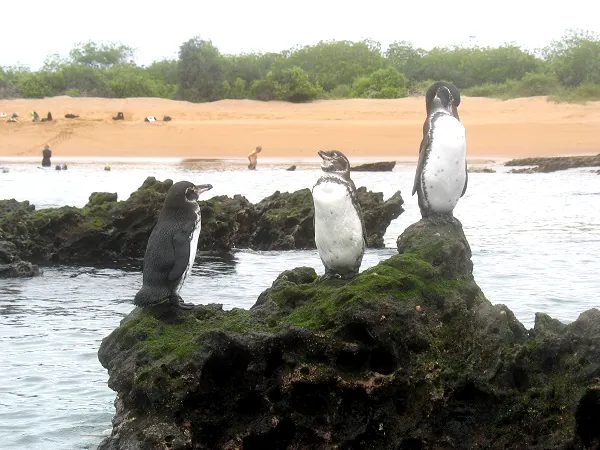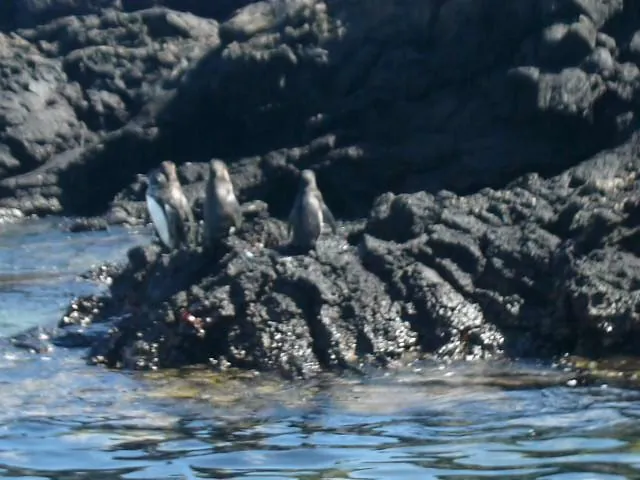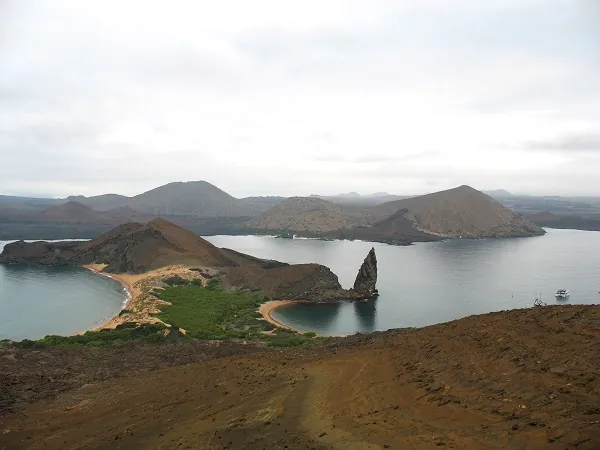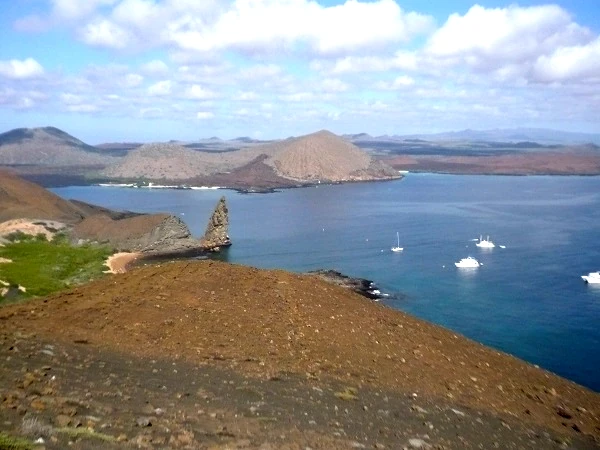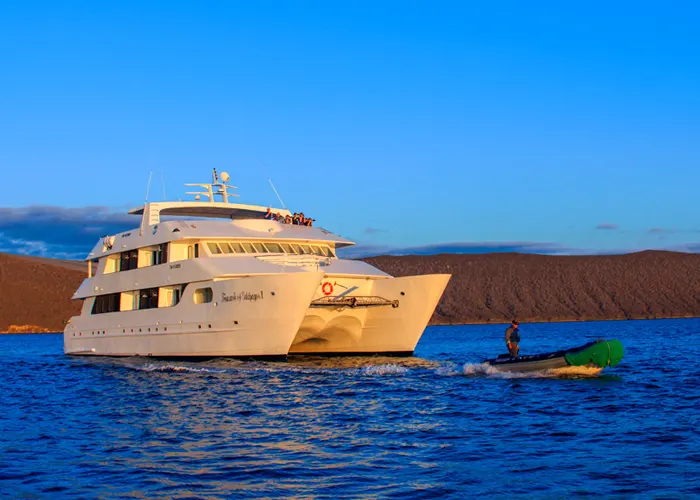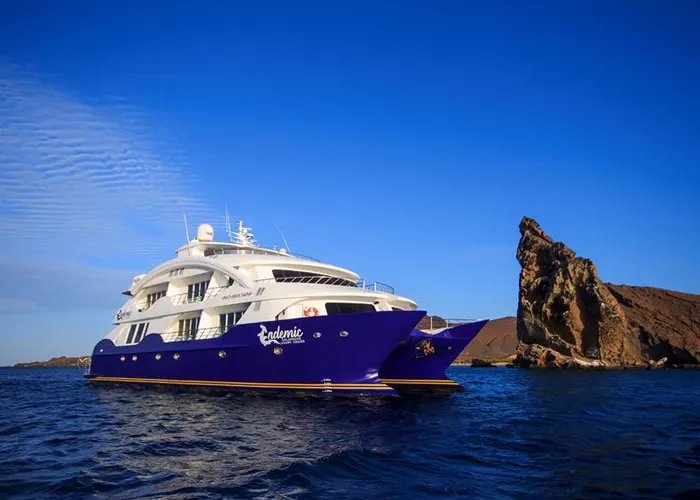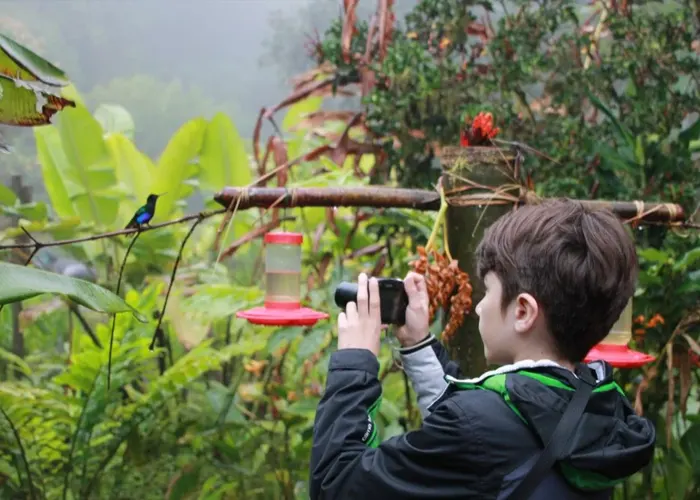Bartolomé Island Galapagos
Bartolomé island
Explore the Volcanic Wonder: Bartolome awaits you!
- Area: 1,2 km²
- Highest point: 114 m
- Population: uninhabited
- Travel options:Cruise ship, day trip from Santa Cruz
Visitor highlights:
- Circular trail on the island.
- Pinnacle Rock
- Important animals and plants: Galapagos penguins, lava lizards, sea lizards, red cliff crabs, Galapagos snakes, ray species, shark species, green sea turtles
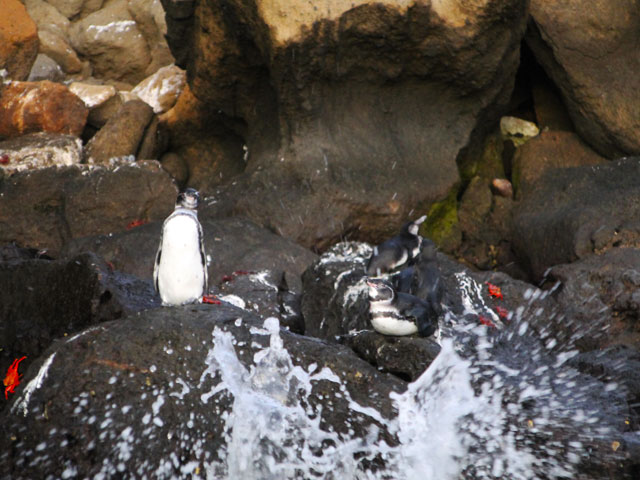
General information
The island owes its name to the British Sir Bartholomew James Sulivan, who was chief surveyor and second lieutenant on the HMS Beagle, with which Charles Darwin explored the islands.
Bartolomé is located immediately east of Santiago Island in Sullivan Bay and is rather barren. The lava landscape with its multicolored volcanic formations resembles a mix between the moon and Mars. Pinnacle Rock, a prominent volcanic cone, stands out and is one of the most popular photo spots on the islands. It was formed by the eruption of an underwater volcano. The magma solidified upon contact with the cold water, exploded, and thus formed this complex basalt volcano.
Furthermore, Bartolomé is known for its colony of Galapagos penguins. However, their population has declined due to climate events and a parasitic species, leading to ongoing monitoring efforts.
Due to its popularity, Bartolomé is the destination of choice for most cruises, such as those with the yachts Calipso, Angelito, Estrella del Mar, or the sailing ships Nemo and Mary Anne. It is also one of the four uninhabited islands visited during island-hopping tours from Santa Cruz. The travel time from Puerto Ayora is approximately two hours.
Places to visit on Bartolomé Island
Trail on the island
The landing site is located in the small bay opposite Pinnacle Rock. You ascend a wooden staircase of about 600 meters to the summit. The wooden structure also serves as erosion protection. Along the way, you can admire the volcanic formations and lava flows. From the summit, you have a magnificent view of Pinnacle Rock, Sullivan Bay, and Santiago Island.
Pinnacle Rock
The landing takes place at the northern beach, where swimming and snorkeling are allowed. In the water, you can observe playful sea lions, penguins, and colorful tropical fish, and you can swim around Pinnacle Rock. The beach is also a nesting area for green sea turtles. Even on a panga ride along the coast, you can observe the marine life, including the penguins, quite well. A short path leads through a small forested area to the southern beach, where swimming is prohibited. From the shore, you can observe stingrays and spotted eagle rays. Whitetip reef sharks can be found on both sides of the coast
